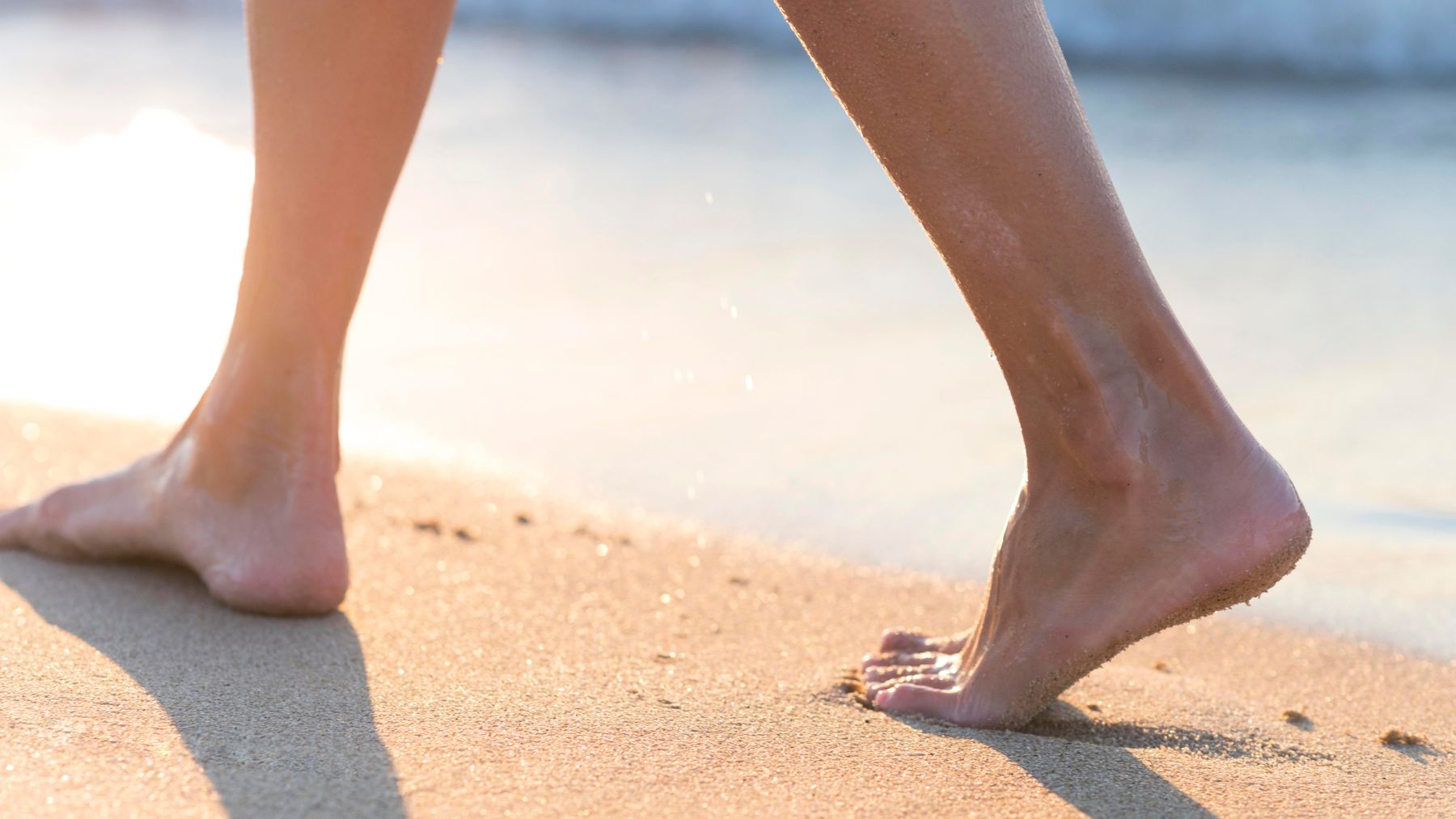Walking barefoot on the beach during summer may seem like the ultimate stress reliever, but doctors are warning that this popular exercise isn’t always harmless. The uneven surface, combined with lack of support and intense sun exposure, can quietly lead to joint pain, muscle strain, or even burns on your feet.
It’s true that walking by the ocean can offer mental and physical benefits—but not everyone’s body reacts the same way. Without proper awareness, what starts as a relaxing beach walk can place extra strain on muscles and joints, especially in people who aren’t used to this type of movement or surface.
What are the pros and cons of walking barefoot on the beach?
Walking on the beach has clear physical benefits. The contact with sand and seawater stimulates circulation, helping reduce swelling and improving blood flow. The texture of the sand also acts as a natural exfoliant, softening the soles of your feet without any effort. And walking in shallow water—especially against the current—adds resistance that can gently tone the legs.
The temperature and softness of the sand also contribute to a soothing experience. But despite the calm feeling, this activity demands more from your body than walking on stable ground. The uneven surface forces muscles and joints to adjust constantly, which increases the physical load.
Dr. José Nebot, an orthopedic specialist, explains that walking on irregular ground causes the body to adopt awkward postures, since weight isn’t distributed evenly. This can result in sprains, muscle overload, and pain in the lower back, knees, or hips—especially in people who aren’t physically trained for it.
He recommends favoring the wet, compact part of the sand near the shore. Even if it’s slightly sloped, it offers better support and requires less effort. This is particularly important for people over 60 or those with a history of back problems.
For those new to beach walking, it’s best to begin with short strolls and gradually increase duration. Adding simple stretches before and after helps prevent soreness. In cases of recent joint surgeries, such as hip, knee, or ankle replacements, flat and stable surfaces are a safer option until full recovery.
Extra precautions to avoid pain or injury
Another hidden danger is foot burns. The tops of your feet can burn quickly from direct sun exposure, and the soles are at risk from hot sand—especially during midday hours. These burns are painful, slow to heal, and could seriously affect your ability to enjoy the rest of your vacation.
If the beach has steep slopes or very dry, loose sand, it’s even more essential to be cautious. The extra strain can trigger fatigue fast, especially if muscles aren’t used to this kind of exertion.
In short, walking barefoot by the ocean can still be a refreshing and healthy part of your summer routine—but only when done mindfully. Pay attention to your body, choose the right section of the beach, and take your time easing into it. A few simple precautions can make the difference between a pleasant activity and one that leads to pain or injury.

